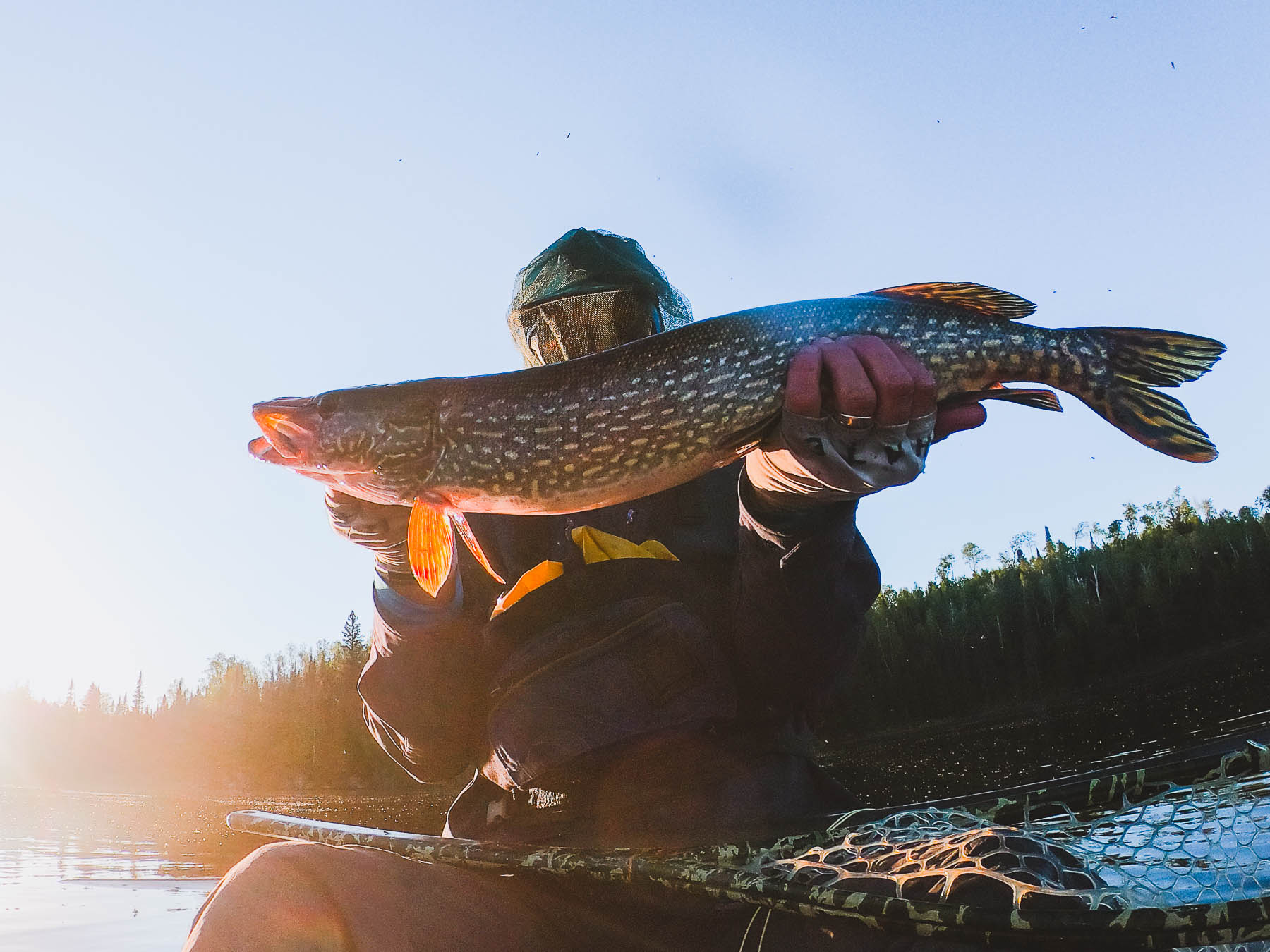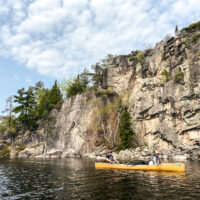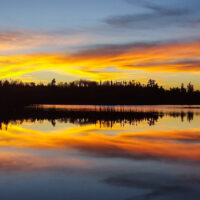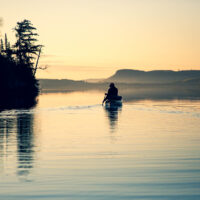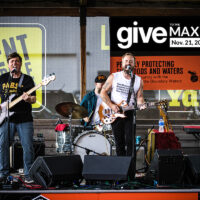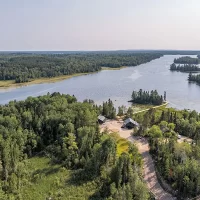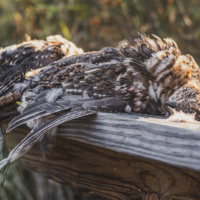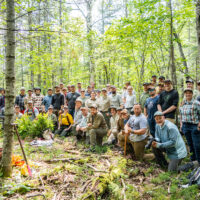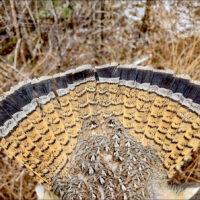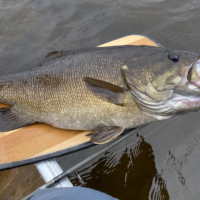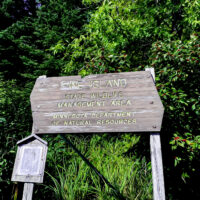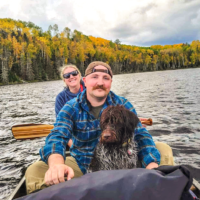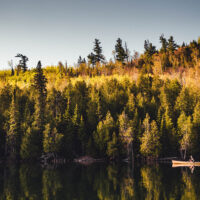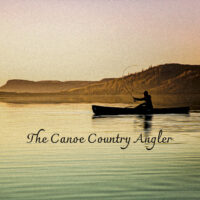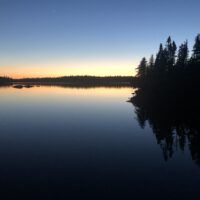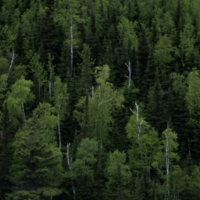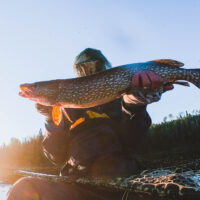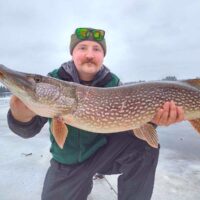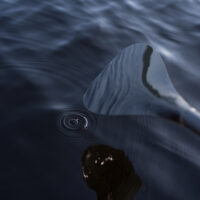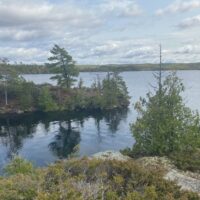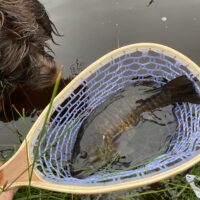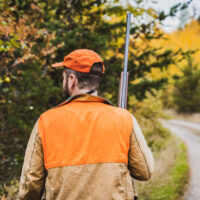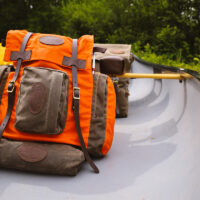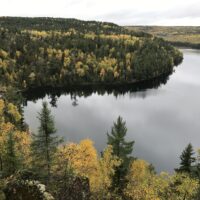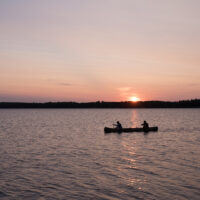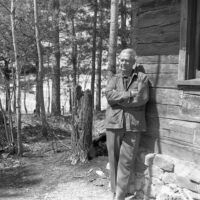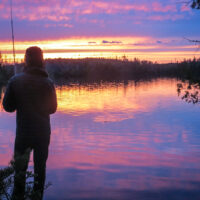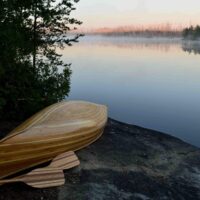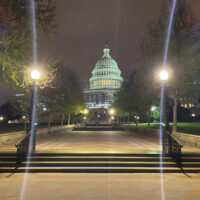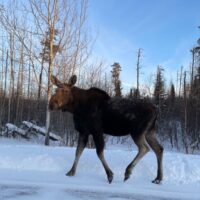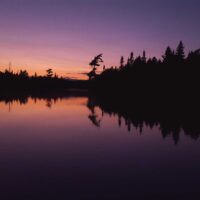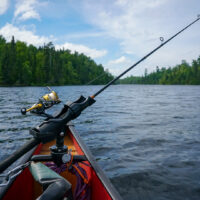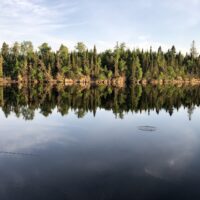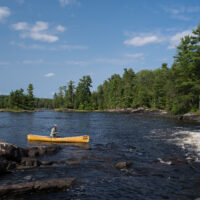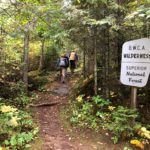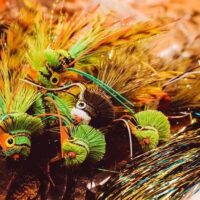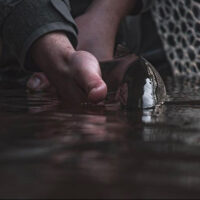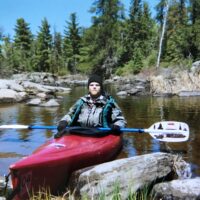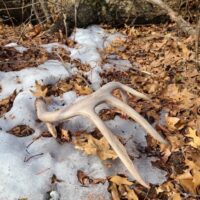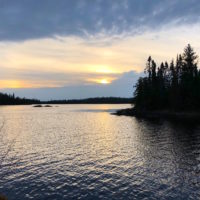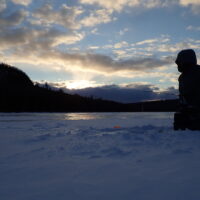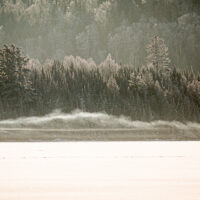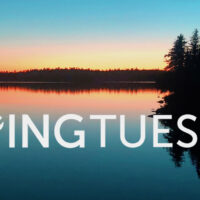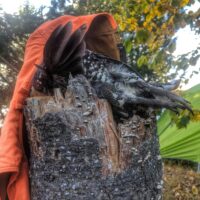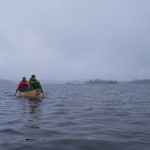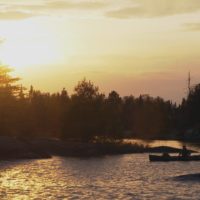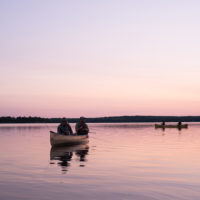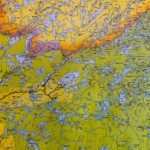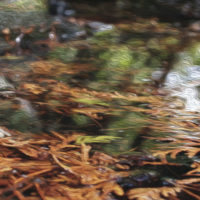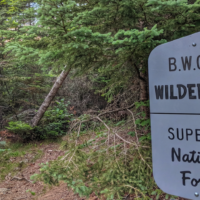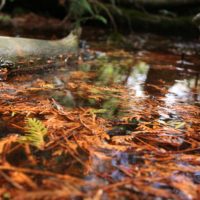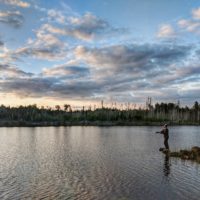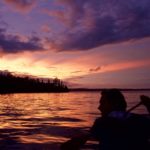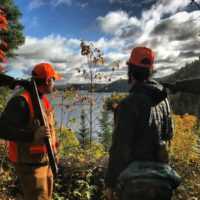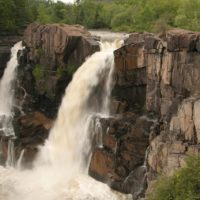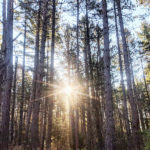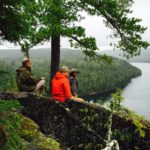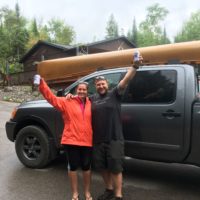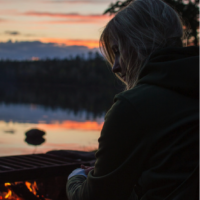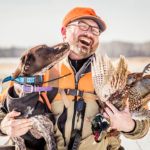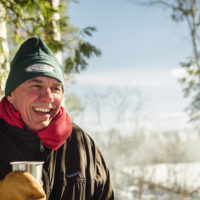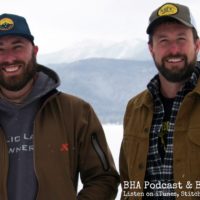Your Guide To The BWCA Permit Season
January 26, 2024 9:20 amAs the winter blues start setting in during the month of January, outdoor enthusiasts can take solace in the fact that Boundary Waters reservation season is almost here! That’s right, in a few short months, the ice will begin to melt off of our favorite wilderness area, and the Northwoods will come to life again. Before you start getting your gear together for ice-out lake trout fishing or those mid-summer smallmouth bites, it’s important to make sure you’ve got a reservation booked in the first place and have all your ducks in a row.
For anyone interested in exploring the Boundary Waters Canoe Area Wilderness this year between May 1st and September 30th, it’s time to start thinking about making reservations through the US Forest Service. The process can seem daunting, but it’s relatively simple to get you and your group ready for an incredible journey in America’s most visited wilderness area. In this article, we’ll break down that process and some important considerations when booking your Boundary Waters trip.
Booking Your Trip:
Permits for trips into the Boundary Waters will become available for purchase at 9 AM CST on Wednesday, January 29th, 2025. While permits will be available throughout the year, booking early gives you the best chance at getting the dates and put-ins you really want. This can most easily be accomplished using the recreation.gov website or calling 1-877-444-6777. A quota permit is required for anyone planning to overnight paddle, overnight hike, or motorized day trip in the Boundary Waters. Because the Boundary Waters is a wilderness area and place where people go to enjoy the tranquility of nature, groups visiting the Boundary Waters are limited to 9 individuals and 4 total watercraft. That being said, smaller groups will generally have a better wilderness experience and have a smaller impact on the campsites, portages, and wildlife.
Useful Notes for Planning Your Trip:
Some routes in the Boundary Waters are more popular than others, which means you may or may not be able to get the exact reservation you really want. Always be ready with at least three trip options. This means you should have three different entry points and dates in mind when you book your trip.
Because the Boundary Waters spans a massive area, permits for the various different put-ins are issued at multiple different issue stations. The hours of operation, address, and contact information for each of these stations can be found under the Issue Stations tab on the permit application page. Make sure you plan your trip around the hours of the issue station that coincide with your trip, as you may not enter the Boundary Waters without your permit.
If you plan to book your trip online, verify that you have an account with www.recreation.gov. Refresh your screen at 9 AM on January 31st, 2024, to ensure you’re looking at the latest booking options.
To avoid any unwanted surprises, be sure to read all the fees and cancellation policies for booking permits for your next Boundary Waters trip.
Important Rules and Tips:
Each individual is limited to only one permit per day. To ensure that potential quotas aren’t being wasted on visitors who aren’t even at their put-in, the Forest Service will cancel all but one reservation on a given day for someone who books more than one. In other words, you cannot book multiple locations for the same day and then pick which one to use when the time comes.
Each group visiting the Boundary Waters will have a group leader who may add alternates. Only the leader or the alternates can pick up the entry permit at the permit issue station. Once a reservation has been made, you will not be able to add another alternate.
In the event that you and your group have to cancel your trip, please do so as soon as possible to make that space available for another visitor.
All permit holders are required to watch three Leave No Trace (LNT) education videos and review the BWCAW Regulations and Rules prior to receiving their permit. Thoroughly review the BWCAW Trip Planning Guide and watch Parts 1 & 2 of the BWCAW Leave No Trace video series prior to picking up a permit. Part 3 will be viewed when your permit is issued. While the Boundary Waters is a pristine wilderness area, visitors must take caution to keep it this way.
The Boundary Waters Canoe Area is over one million acres, making it easier to get lost than in some other places. Before departing, always leave your trip itinerary with friends or family in case of an emergency.
The Boundary Waters is home to many black bears. While these animals generally don’t pose a safety threat, it is imperative that visitors stow their food in a way that makes it inaccessible to them. Although hanging your food in a tree is a great option for keeping your food safe, some campsites will not have trees that can facilitate this. Another option is to keep your food in a bear-safe container. These vary in size, price, and packability, but can be rented or purchased at many of the outfitting companies outside the Boundary Waters. Call ahead to figure out which type makes the most sense for your trip and where to get one.
Before booking a quota Boundary Waters permit, consider the prospect of camping in the Superior National Forest outside of the Boundary Waters. Trips in a wilderness area present several challenges that require specific safety and gear considerations. While there are dozens of great resources available to help you prepare for a Boundary Waters trip, many people enjoy the comfort of the 254 backcountry campsites in Superior National Forest and the many campgrounds in the area with varying amenities. Check out the USDA Superior National Forest Homepage to learn more about recreational opportunities in Superior National Forest.
A Note from Sportsmen for the Boundary Waters:
After you’ve got your reservation, orchestrated a plan with your group, viewed the Leave No Trace videos, got your permit, and taken to the water, it’s important to remember a few things. The Forest Service can make all the rules in the world, but if each and every visitor to the Boundary Waters doesn’t uphold the basic principles of wilderness stewardship, the experience begins to decay for everyone else. Be considerate out there and pick up after yourself and others if need be. As hunters and anglers, we must be mindful of our impact on the ecosystem even more so than the rest of the Boundary Waters visitors and lead by example.
2025 Updates From The Forest Service:
Facts & Tips for Reserving a Permit and Planning a Trip to the Boundary Waters Canoe Area Wilderness
Data suggests visitors reserve more permits than they can use. Forest managers ask everyone to keep these facts in mind while planning a BWCAW adventure:
· Reservations surged during the pandemic, while cancellations more than doubled in six years.
· In 2024, over 11,000 permits were cancelled, 58 percent were reserved in January.
· Cancelled reservations are available for resale within 24 hours so there’s no shortage of quota.
· “No-shows” without cancellation has increased in the BWCAW.
You can help prevent stockpiling and hoarding permits by following these best practices:
One Permit per Day
The Forest Service reserves the right to cancel multiple same day, overlapping, and consecutive reservations under the same permit holder name without notification. Permit holders are limited to one permit per day, because they can physically only be in one place at a time and must stay with their group for the duration of the trip.
Cancel Right Away
Cancel immediately if you cannot go using the Recreation.gov app. The app is not recommended for on-sale events, for best results on January 29, use a computer or laptop with Chrome.
Tips for making a successful reservation:
· Plan Ahead: Have at least three travel options (dates and entry points) in mind if your preferred option is unavailable yet only reserve the permit you can use.
· Be Considerate of Others: Know where and when you are going before making a reservation. When visitors only reserve the permit they can use, entry points have more quota available, and groups have more time to plan trips that fit their skill level.
· Permits are not transferable: Permit holder, alternates, entry date and entry point cannot be changed once the permit reservation is made. Only the permit holder or alternate permit holders specified at the time of reservation can pick up the permit (photo I.D. required). Permits must be picked up on the entry date or one day prior.
· Alternate Permit Holders: Check the box under group member names to select alternates who can pick up the permit if the permit holder cannot go. Alternates cannot be added later.
· On-line Reservations: The latest version of Chrome is recommended. Create a Recreation.gov account or ensure you have one. Be logged in and refresh your screen at 9:00 a.m. CST to begin.
· Issue Stations: Change issue stations online at Recreation.gov. Log in and select “Reservations” to modify a permit. Review hours and locations to select an issue station near your entry point.
· Multi-factor Authentication (MFA): MFA is new and completely optional for visitors to access their Recreation.gov account. This selection adds a layer of security but is not required.
· Fees & Cancellations: Review this section of the BWCAW permit to ensure you are aware of all related fees and the cancellation policy – www.recreation.gov/permits/233396.
Successful trips are the result of careful planning!
· Leave No Trace Videos: Watch and share the Leave No Trace (LNT) video series with your group prior to arrival. Then watch Part 3 and review the BWCAW Regulations and Rules at issuance
· BWCAW Trip Planning Guide: Review the trip planner. Topics include permits, Leave No Trace, regulations and rules, safety, entry points, maps, history, volunteering, and more!
· Trip Itinerary: The BWCA Wilderness is over 1 million acres in size. Leave a trip itinerary with family or friends prior to departure, see example on page 23 of the trip planner.
· Route Planning: Look online for route planning guidebooks, trip ideas and information. Contact local outfitters, guides, resorts, or commercial issue stations.
· Bear Awareness: BWCAW visitors are required to properly store food. Read the Forest Order and consider using IGBC approved containers, product-tested and found to be resistant to bears.
· Superior NF Recreation Opportunities: Is wilderness the best option for your group? The forest has 3 million acres with over 200 backcountry campsites that require no fees or reservations. Visit the Superior National Forest website for canoe routes (outside BWCAW).
Educational Links
BWCAW Recreation.gov: https://www.recreation.gov/
BWCAW Permit on Recreation.gov: www.recreation.gov/permits/233396
Multi-factor Authentication on Recreation.gov: https://help.recreation.gov/helpcenter?id=kb_article&sys_id=96b3e5191b295250751364e5624bcb98
BWCAW Issue Stations: https://www.recreation.gov/permits/233396/cooperators
IGBC Approved Bear Containers: https://igbconline.org/programs/bear-resistant-products/
BWCAW Leave No Trace User Education Video Series:
Part 1 –Trip Planning: https://www.youtube.com/watch?v=nen7lRqEjm8
Part 2 – Plan Ahead and Prepare to Leave No Trace: https://www.youtube.com/watch?v=GA4-yvVKu48
Part 3 – Know Before You Go: https://www.youtube.com/watch?v=PmoP3rGdmek
BWCAW Regs and Rules: https://www.fs.usda.gov/detail/superior/recreation/?cid=fseprd1100181
BWCAW Trip Planning Guide: https://usfs-public.app.box.com/v/BWCAW-TripPlanner
Backcountry Campsites (Superior NF): www.fs.usda.gov/activity/superior/recreation/camping-cabins/?recid=36905&actid=34
Superior National Forest website: www.fs.usda.gov/main/superior/home
Canoe Routes (Outside BWCAW): https://www.fs.usda.gov/main/superior/maps-pubs
Prior BWCAW On-Sale News Releases: https://www.fs.usda.gov/news/superior/news-events
photo by: Hansi Johnson

